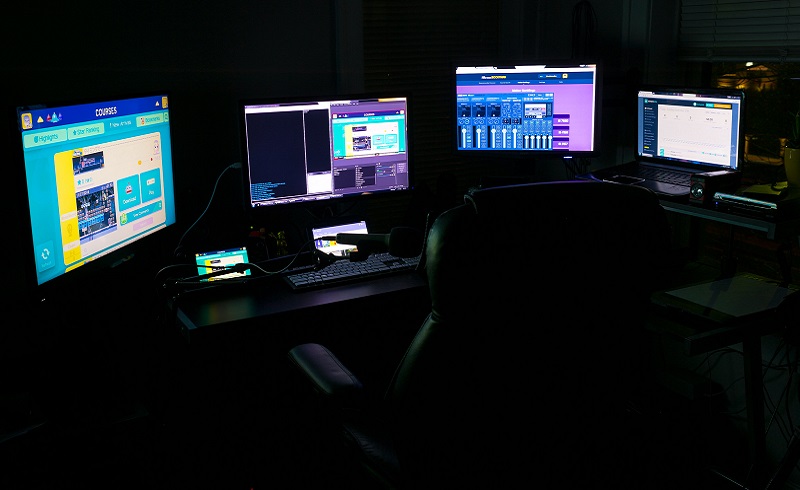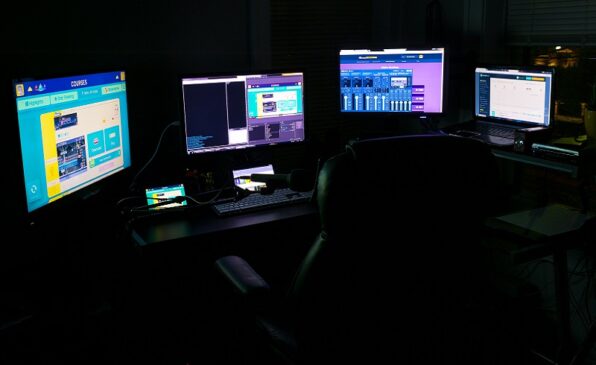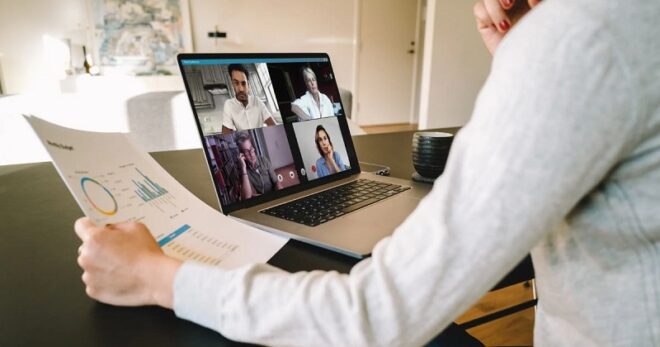Creative Ways to Engage with Audience During Live Streams

TechsPlace | Live streams have become an integral part of our digital landscape, revolutionizing how we consume content and interact with others online. In its simplest form, live streaming refers to the real-time broadcasting of audio or video content over the Internet. Let’s delve deeper into what live streaming entails, its history, and why it’s important in today’s digital age.
What is Live Streaming?
Live streaming involves transmitting video or audio content over the internet in real time. Unlike pre-recorded videos, live streams are broadcasted instantly, allowing viewers to engage with the content as it unfolds. This interactive nature enables real-time communication between content creators and their audience, fostering a sense of community and connection.
History of Live Streaming
The concept of live streaming dates back to the early 1990s when the internet first became accessible to the public. However, it wasn’t until the mid-2000s that live streaming gained popularity with the emergence of platforms like Justin.tv (which later became Twitch) and Ustream. These platforms paved the way for individuals and organizations to broadcast live events, ranging from sports competitions to concerts and personal vlogs.
Importance of Live Streaming
Live streaming offers several benefits for both content creators and viewers. For creators, it provides a platform to share their expertise, connect with their audience on a deeper level, and even monetize their content through donations, subscriptions, or sponsorships. On the other hand, viewers benefit from the immediacy and authenticity of live content, allowing them to engage with their favorite creators in real time and participate in live discussions.
Platforms for Live Streaming
Several platforms cater to live streaming, each offering its own set of features and audience demographics.
YouTube Live
YouTube Live allows content creators to broadcast live streams directly to their YouTube channel, reaching millions of viewers worldwide. With features like live chat, real-time analytics, and monetization options, YouTube Live is a popular choice for creators looking to engage with their audience and grow their channel.
Facebook Live
Facebook Live enables users to broadcast live videos to their Facebook profile, page, or group. With its built-in audience and seamless integration with the Facebook platform, Facebook Live offers a convenient way for individuals and businesses to connect with their followers and share live updates, events, or behind-the-scenes content.
Twitch
Twitch is a live streaming platform primarily focused on gaming, esports, and creative content. With its robust community of gamers and extensive features such as live chat, subscriptions, and emotes, Twitch has become the go-to destination for gamers and esports enthusiasts looking to watch live gameplay, interact with their favorite streamers, and participate in gaming communities.
Instagram Live
Instagram Live allows users to broadcast live videos to their Instagram followers in real time. With its ephemeral nature (live videos disappear once the broadcast ends) and interactive features like live comments and reactions, Instagram Live offers a casual and intimate way for users to connect with their audience and share spontaneous moments.
Equipment for Live Streaming
While live streaming can be done with minimal equipment, investing in the right tools can enhance the quality and professionalism of your broadcasts.
Cameras
A high-quality camera is essential for capturing clear and crisp video footage during live streams. Whether you opt for a DSLR, mirrorless camera, or webcam, choose a camera that suits your budget and production needs.
Microphones
Good audio quality is equally important in live streaming. Invest in a quality microphone to ensure clear and distortion-free audio for your viewers. Options include USB microphones, shotgun microphones, and Lavalier microphones, depending on your setup and preferences.
Lighting
Proper lighting can significantly improve the visual quality of your live streams. Invest in soft, diffused lighting to minimize harsh shadows and create a flattering look for your broadcasts. LED panel lights, ring lights, and softboxes are popular choices for live-streaming setups.
Software and Streaming Platforms
Choosing the right software and streaming platform is crucial for a smooth and successful live streaming experience. Popular options include OBS Studio, Streamlabs OBS, and XSplit for broadcasting, and platforms like YouTube, Facebook, Twitch, and Instagram for hosting your live stream.
Tips for Successful Live Streaming
While live streaming can be rewarding, it also requires careful planning and execution to ensure a seamless experience for both you and your audience. Here are some tips for successful live streaming:
Plan Ahead
Before going live, take the time to plan your content, set up your equipment, and test your internet connection. Create a rough outline or script to guide your broadcast and keep your audience engaged.
Engage with Your Audience
Interact with your viewers during the live stream by responding to comments, answering questions, and acknowledging their presence. Engaging with your audience fosters a sense of community and encourages them to participate in the conversation.
Test Your Equipment
Perform a test run of your equipment before going live to ensure everything is working properly. Check your camera, microphone, lighting, and internet connection to avoid technical issues during the broadcast.
Promote Your Live Stream
Build anticipation for your live stream by promoting it across your social media channels, email list, and website. Share teasers, behind-the-scenes content, and reminders to encourage your followers to tune in.
Benefits of Live Streaming
Live streaming offers numerous benefits for content creators, businesses, and viewers alike.
Real-time Interaction
One of the primary advantages of live streaming is the ability to interact with your audience in real time. Whether through live chat, comments, or Q&A sessions, live streaming enables direct communication between content creators and viewers, fostering a sense of community and connection.
Reach a Wider Audience
Live streaming allows you to reach a global audience instantaneously. With the click of a button, you can broadcast your message to viewers across different time zones, demographics, and geographic locations, expanding your reach and impact.
Build Authentic Connections
Unlike pre-recorded content, live streaming offers a raw and unfiltered look into your world. By sharing live updates, behind-the-scenes moments, and authentic interactions, you can build genuine connections with your audience, earning their trust and loyalty over time.
Increase Engagement and Loyalty
Engaging live content captivates viewers’ attention and encourages them to actively participate in the conversation. Whether through likes, comments, shares, or donations, live streaming creates opportunities for viewers to engage with your content and support your endeavors, leading to increased engagement and loyalty.
Conclusion
Live streaming has transformed the way we consume and interact with content online, offering a dynamic and immersive experience for both creators and viewers. By harnessing the power of live streaming platforms, equipment, and best practices, you can elevate your content, grow your audience, and build meaningful connections in the digital realm.
This article is contributed by guest author on techsplace.com.





